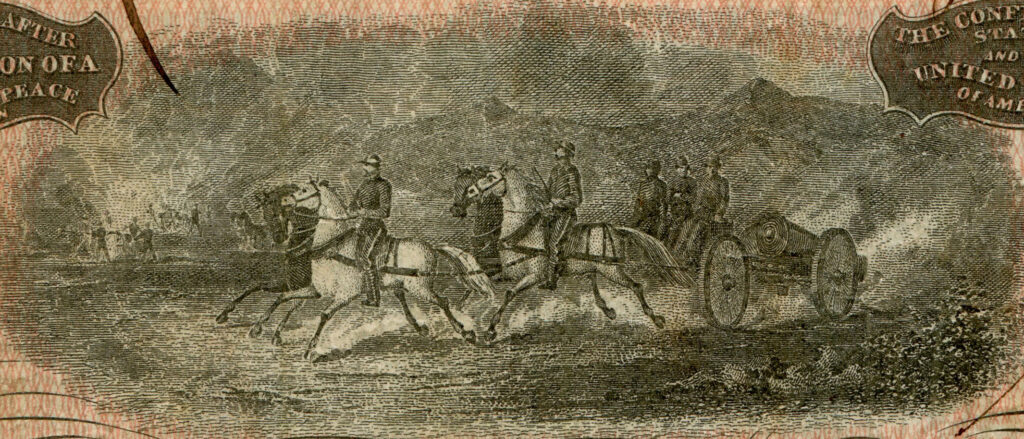
closeup design from Confederate $10 banknote
During the American Civil War (1861-1865), currency from the Confederate States represents a pivotal chapter in U.S. history. As the Southern states seceded from the Union, the Confederate government issued new paper money. Each banknote was individually signed and given a serial number that was written on the money itself. Initially, notes were printed on high-quality, rag-based paper. However, as the war continued, the Confederacy faced severe shortages of resources. This led to the use of alternative, lesser-quality and papers or recycled materials. The value of these notes steeply declined, and by 1863 Confederate banknotes had lost about two-thirds of their value. By the end of the war they “were worth less than 2 cents to the dollar” (Department of Historic Resources). After printing, the banknotes were cut apart by hand, so some are considerably skewed in shape or contain extra sections of notes printed on the same sheet.
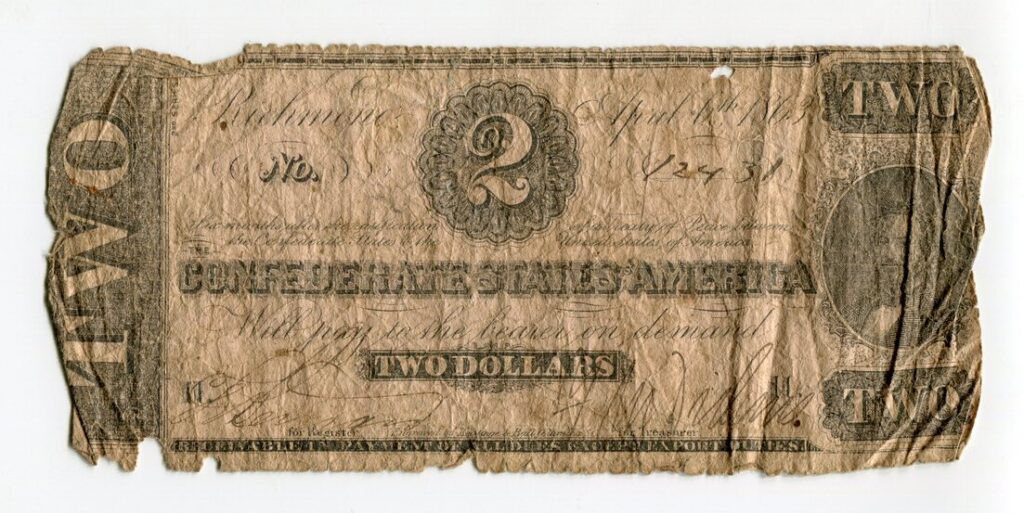
A $2 note printed in Richmond, Virginia in 1863. The design features Judah P. Benjamin, the Confederate Secretary of State.
The backside of the $2 note has a blank design.
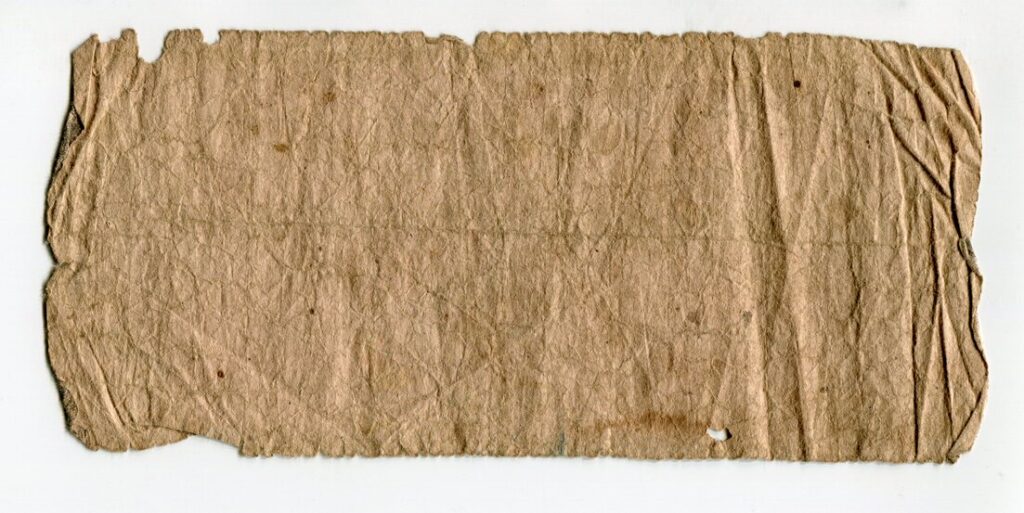
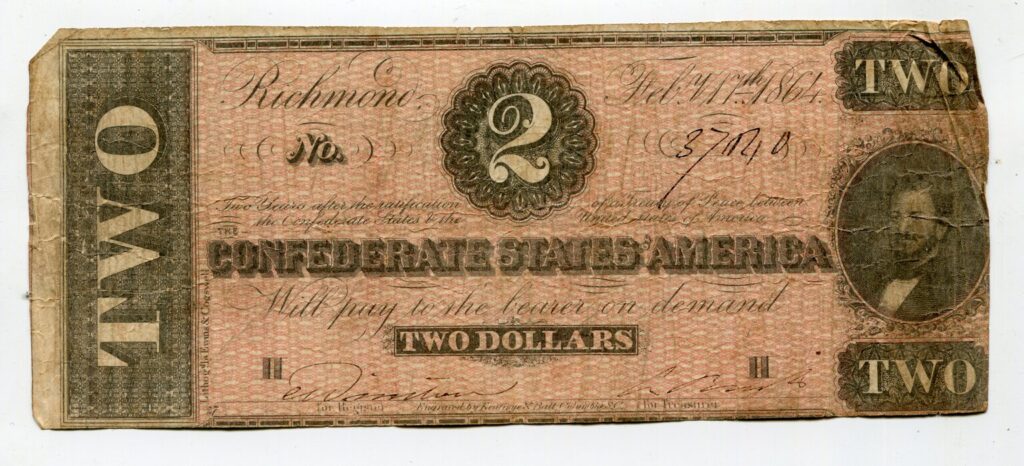
A better quality $2 note printed in Richmond, Virginia in 1864.
The paper is very brittle, which is obvious without the design on the backside.

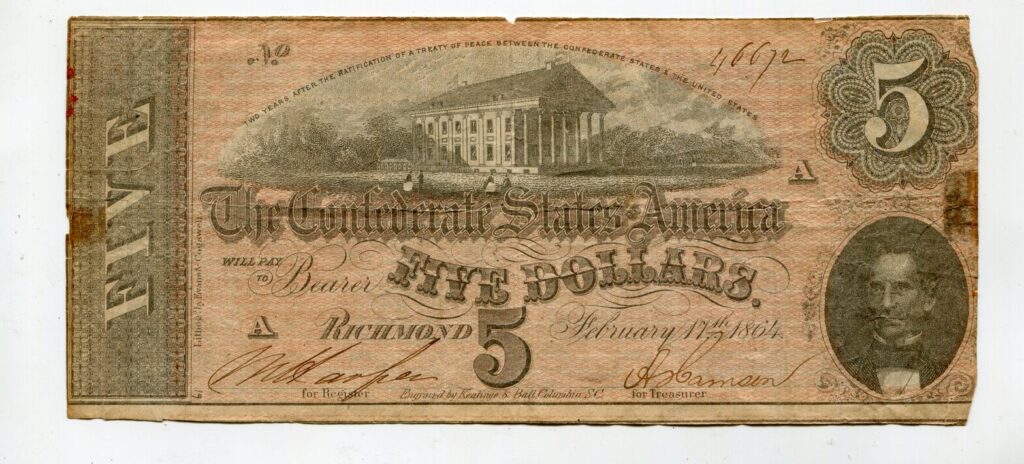
A $5 note printed in Richmond, Virginia in 1864. The design features the Virginia State Capitol as well as Christopher Gustavus Memminger, the CSA Secretary of the Treasury.
The backside of most Confederate notes has the denomination spelled out with the numeral “5” in each corner. This one has a red stamp in the top right corner.
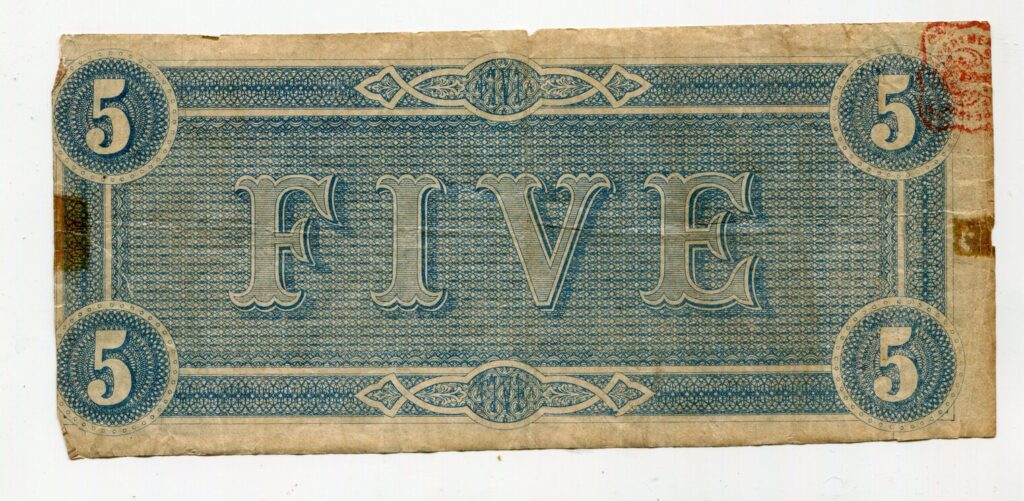
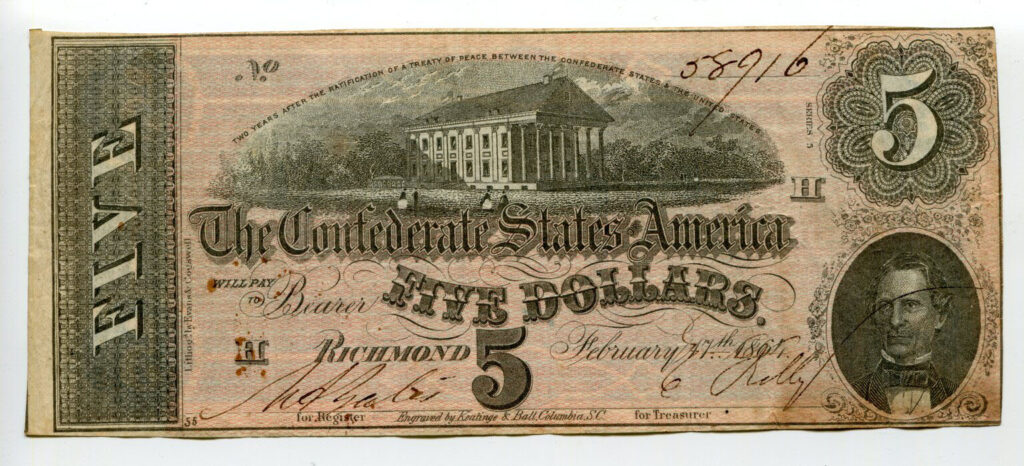
A better condition $5 note printed in Richmond, Virginia in 1864.
The backside shows “FIVE” on an intricate engraved design printed in blue ink.
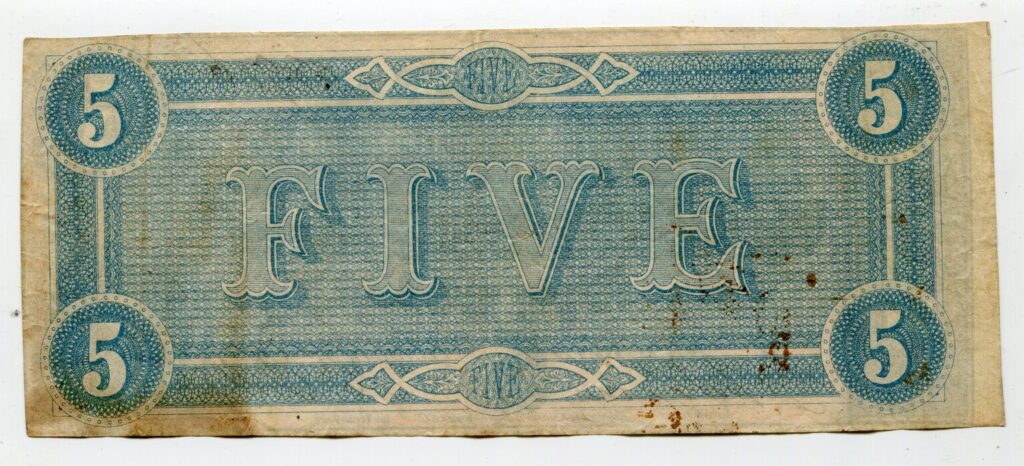

A $10 note printed in Richmond, Virginia in 1864. The design features a military scene of soldiers pulling a cannon on horseback. There is also a portrait of Robert M. T. Hunter, president pro tempore of the Confederate States Senate.
The backside shows “TEN” on an intricate engraved design printed in blue ink.
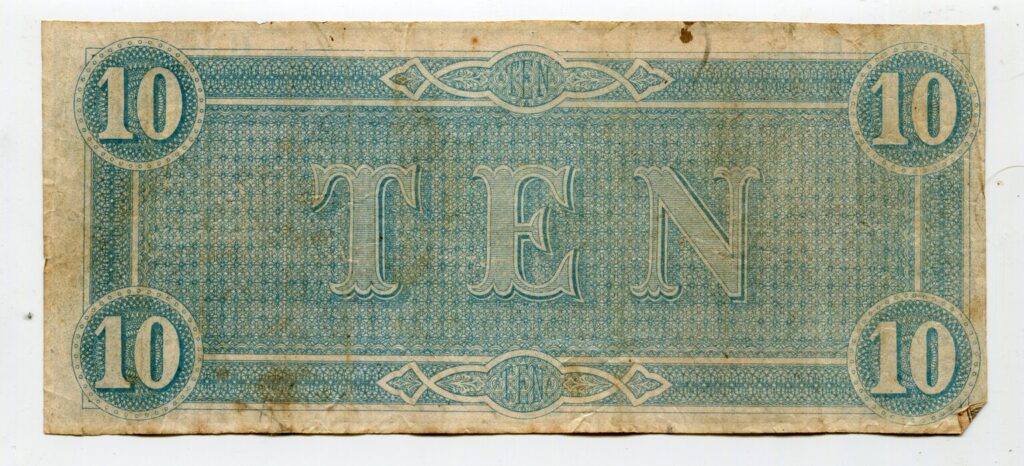
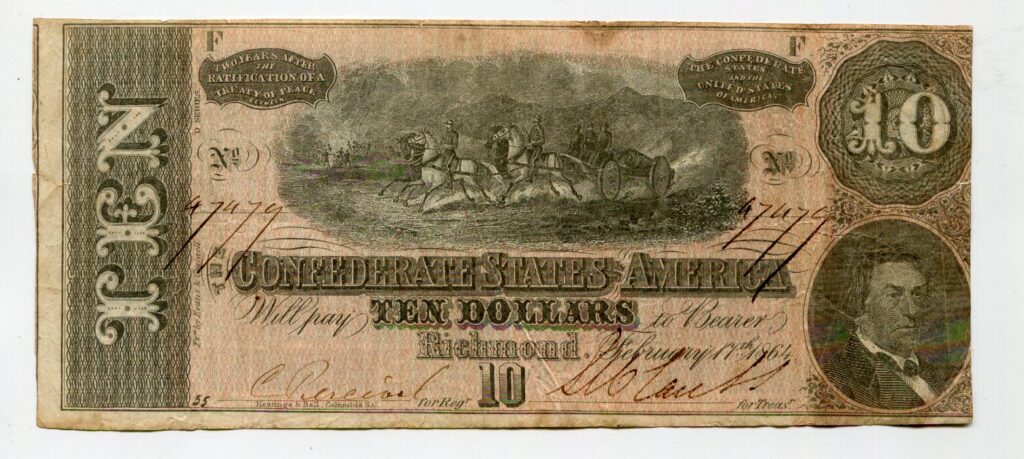
A $10 note printed in Richmond, Virginia in 1864. This one has different signatures on the bottom, but is otherwise the same as the previous example. The pink design on the base of the design is more vibrant and visible here.
The ink on this note is more vividly blue than the other examples in the collection.
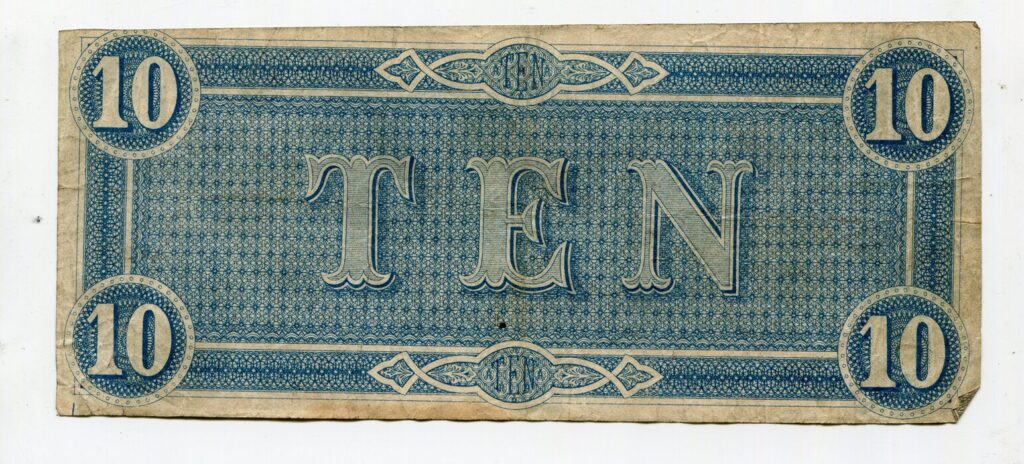

A $20 note printed in Richmond, Virginia in 1864. The design features the Tennessee State Capitol. There is also a portrait of Alexander Stephens, vice-president of the Confederate States.
The backside shows “TEN” on an intricate engraved design printed in blue ink.
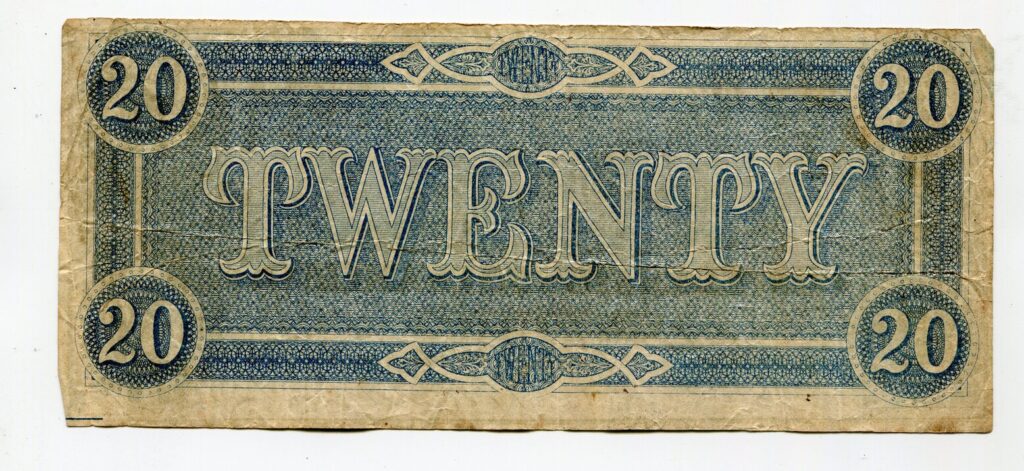
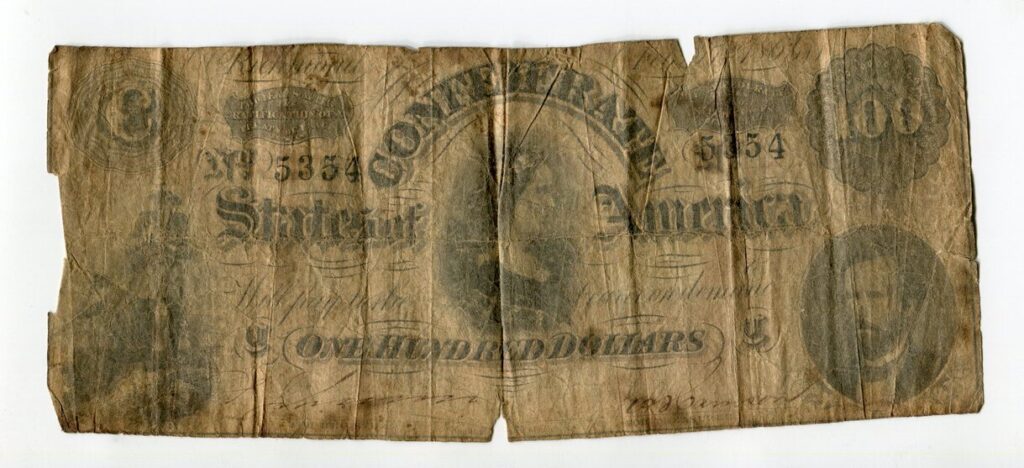
This $100 “C” note has lost most of its vibrant pink color and detail. In the center is a depiction of Lucy Pickens, First Lady of South Carolina. The right corner shows George W. Randolph, Confederate States Secretary of War. The left corner depicts two soldiers.
The backside shows “HUNDRED” on an intricate engraved design printed in blue ink.
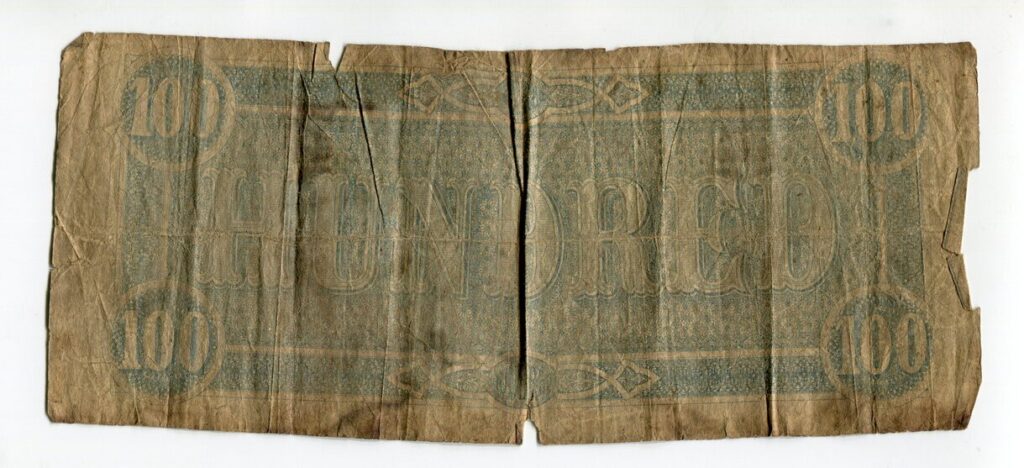
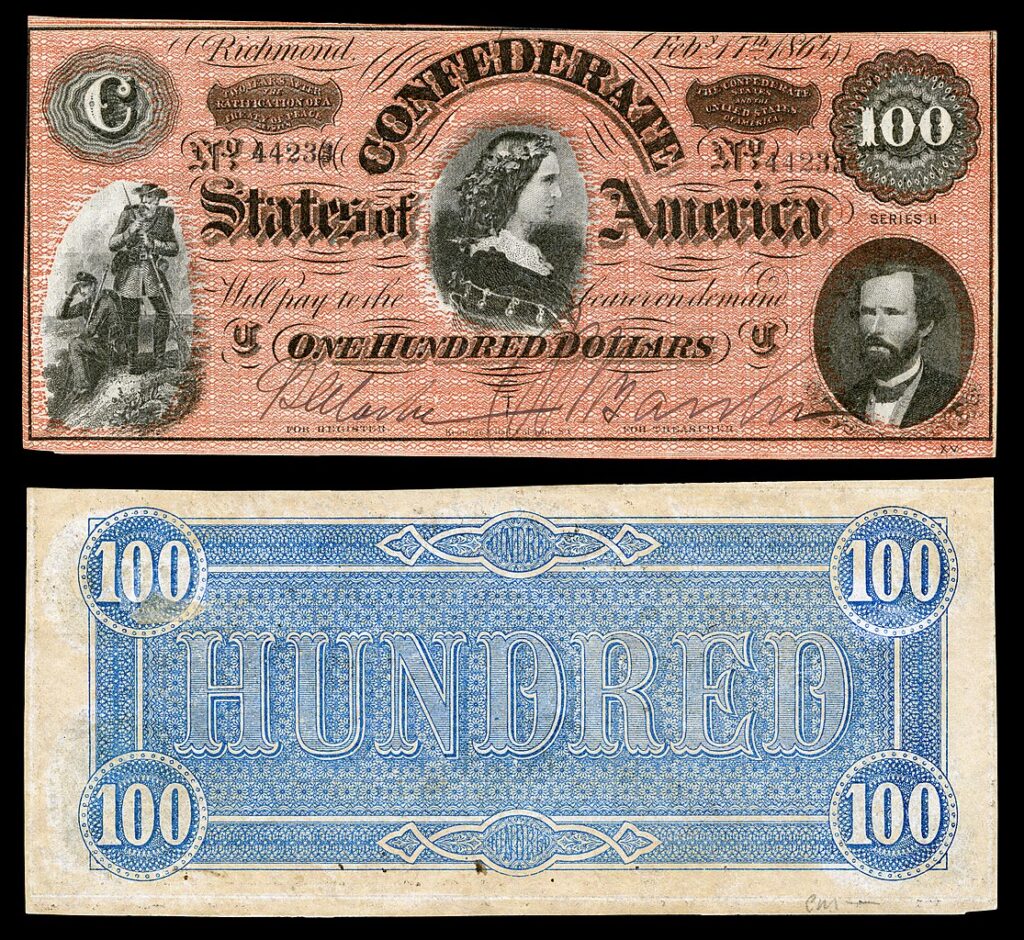
To conclude, here is a public domain image showing an example of a $100 banknote from 1864 in excellent condition.
